Making use of a number of textiles and styles, these Binibining Pilipinas 2023 national costumes reflected common themes of mythological and religious emblems. They also had scenic scapes, and the stories of the Philippines expressed through each candidate’s fashion
Part of the pressure and privilege in joining pageants is representing your very own country. For this sole reason, avid fans and even casual viewers await the national costume segment in every pageant. Indeed, wearing one’s identity is a reflection of who can wave our country’s flag with pride and honor. And this year, the Binibining Pilipinas candidates showcased their various interpretations of the country’s rich history and culture through the bespoke creations they donned yesterday in the exhibition.
RELATED: 5 Things You Need to Know About Binibining Pilipinas 2023
Making use of a number of textiles and styles, these Binibining Pilipinas 2023 national costumes showcased a number of common themes. Those who stood out had mythological and religious emblems, as well as scenic scapes and the stories of the Philippines expressed through each candidate’s fashion. With that said, here are MEGA’s top selections for the national costume:
Quezon City
Juvel Cyrene Bea breathed life into the final transformation of Ibong Adarna, its golden state. Quezon City’s greatness tied in through the winning shades of gold is also paired with the colorful feathers symbolizing the city’s movement towards inclusivity of all individuals.
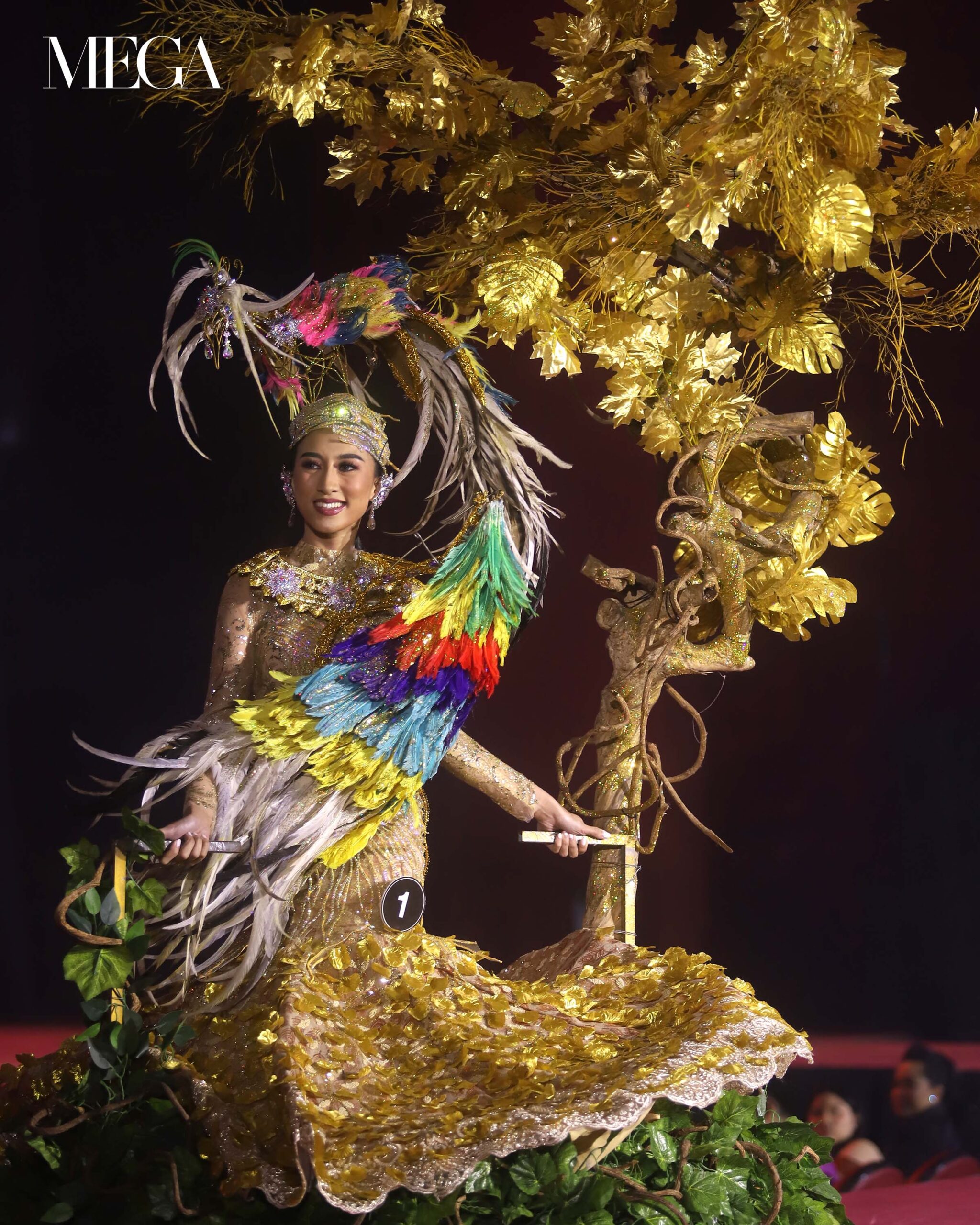
Albay
Breathing life to Bicol’s famous Mayon Volcano is Jeane Isabelle Bilasano’s abaca filipiniana as she embodied Daragang Magayon. The ensemble featured intricately assembled appliques and textures such as floral embellishments and a ruffled skirt. While the candidate’s umbrella showcased Mayon Volcano’s active state with its smoke effect, her frock also captured the cone shape the volcano is much known for.
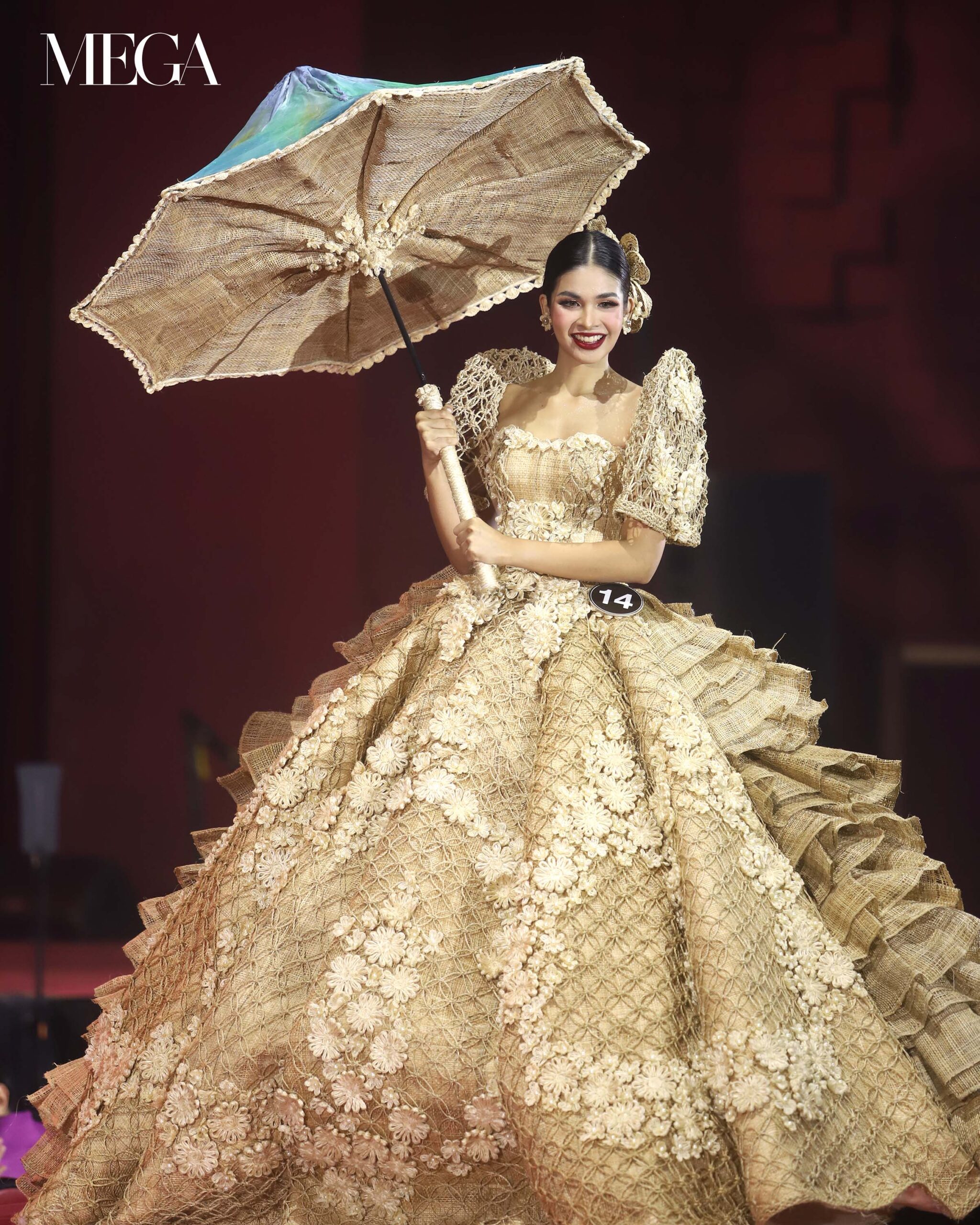
Hermosa, Bataan
Much like the city’s name, Mary Chiles Balana donned a beautiful filipiniana that undoubtedly reigned on simplicity. According to its explanation, the light color of the frock symbolized Hermosa’s simple way of life. That, as well as their fine sand. The city’s pursuit to make the lives of their people grow is iterated in the floral details found in the Binibining Pilipinas candidate’s costume.
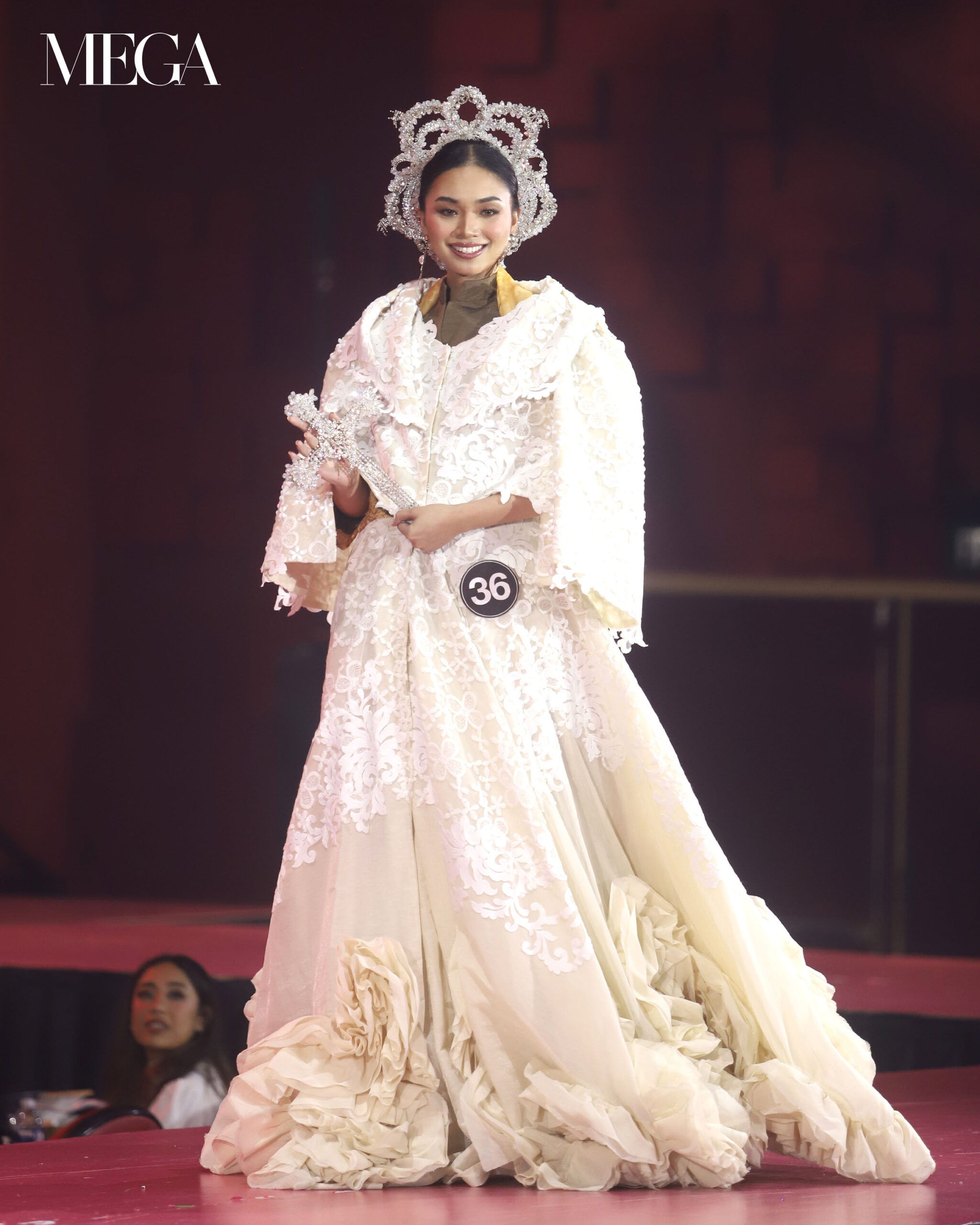
Santolan, Pasig
Taking inspiration from Santolan’s dish called “pakalog”, Xena Ramos wore a pearlescent gown that did not scrimp on stories and intricacy. The capiz shells forming frills resemble the musical chant that is said to welcome peace and luck during their festival. Highlighting the gastronomic influence to the costume, Santolan’s Binibini held a palayok with jumping buligs out of it.
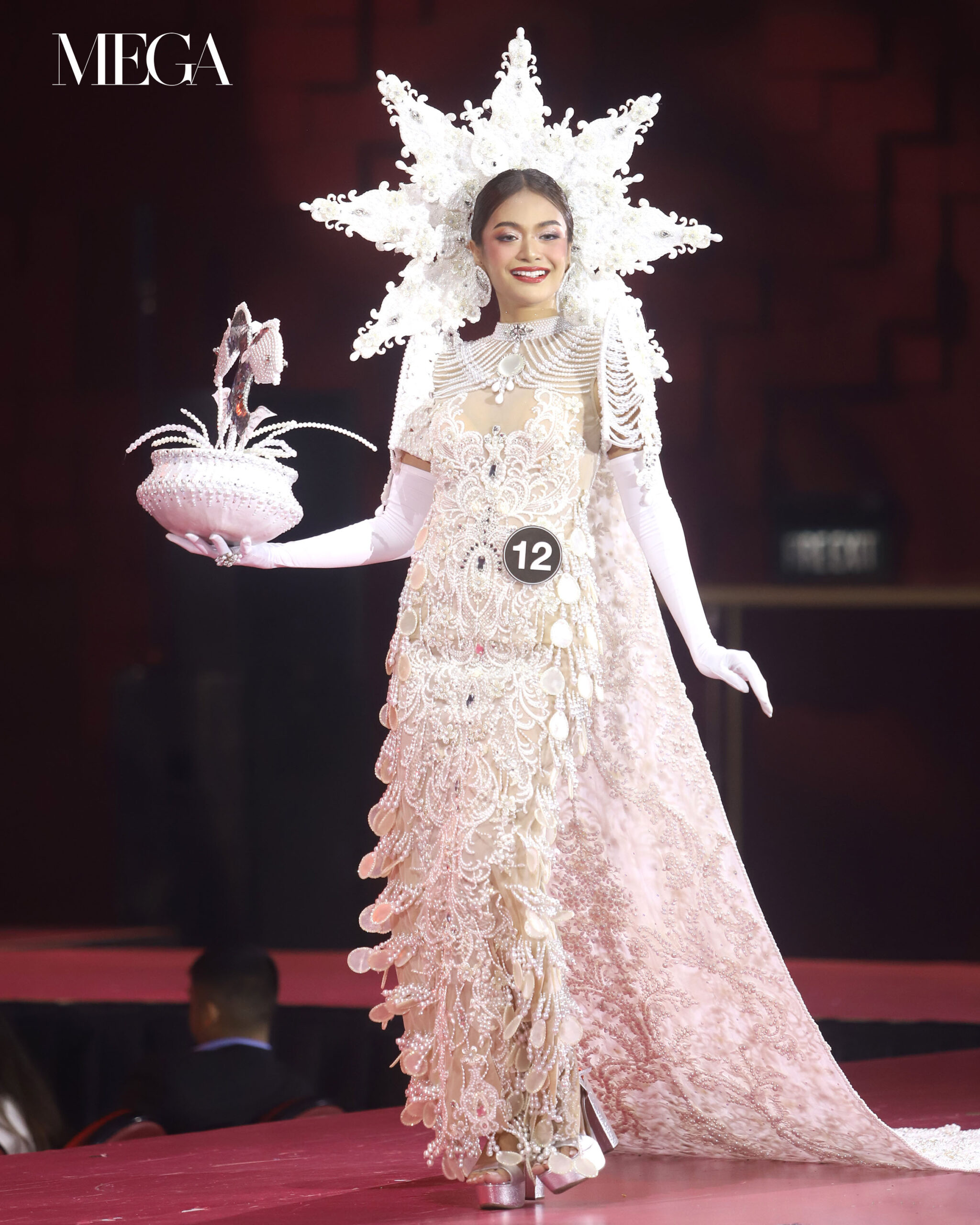
Aklan
The elaborate elements of Jessilen Salvador’s national costume stood for the rich stories on the province’s history. Embodying the ruler’s wife Maniwantiwan, the Binibining Pilipinas candidate wore an intricate costume with golden trinkets that symbolized the barter of jewelry in exchange for the Atis’ land occupation. Meanwhile, the tassels added the Ati-Atihan Festival touch to the creation. Last but not the least, the balangay was a reminder of the datus’ journey to Panay island.
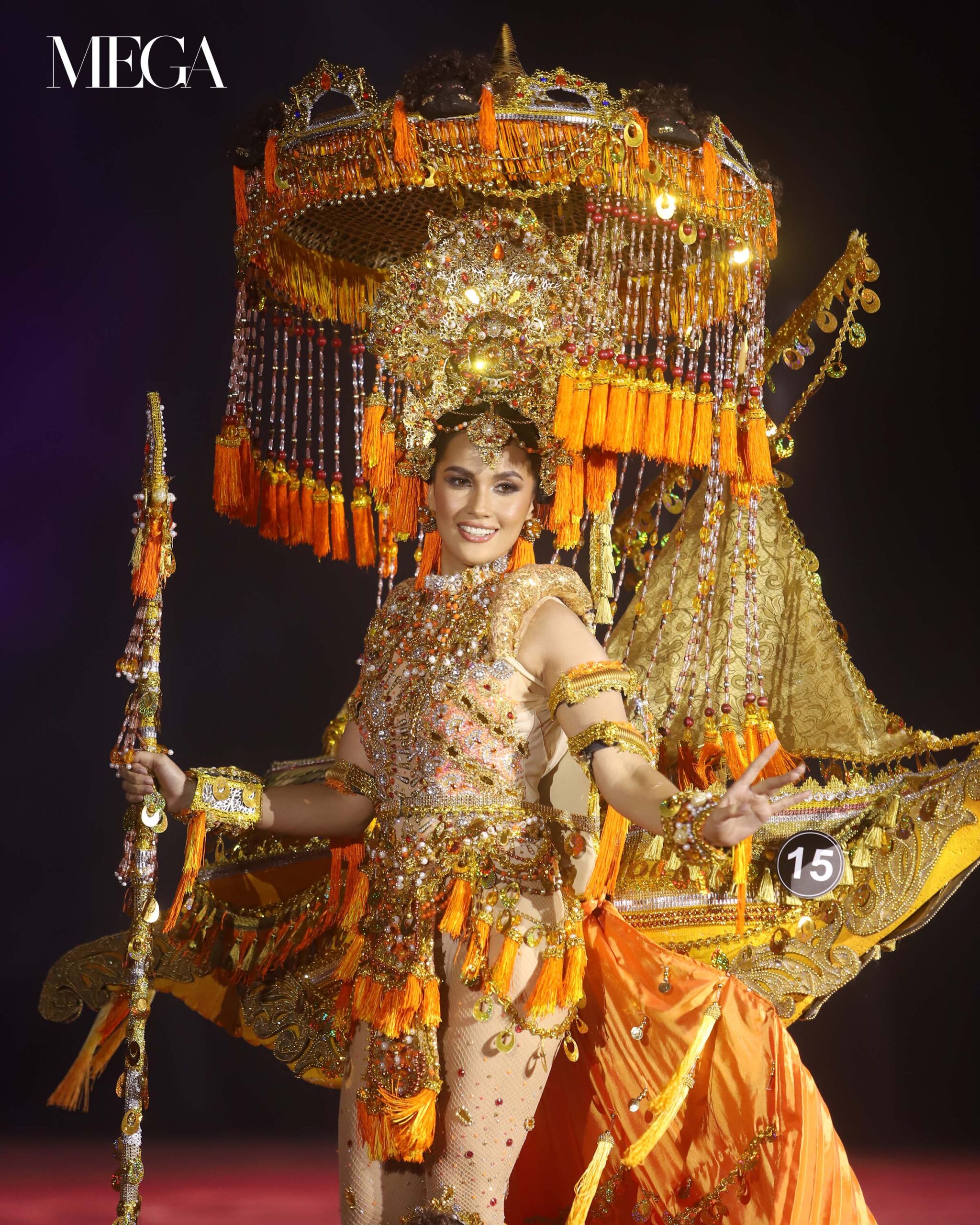
Pampanga
Lyra Punsalan’s national costume was Múnag Sumálâ, the child of the God Sinukuan. Interpreting the mythical creature’s name which translates to “the radiance by which you can tell that the morning is about to break out,” Punsalan’s ensemble had a rainbow sky train for that. With Múnag Sumálâ said to take the form of a golden serpent, the animal was also part of the costume as an arm accessory. Lastly, adding more wow factor to the costume was the Kapampangan script called kulitan adorning the candidate’s limbs.
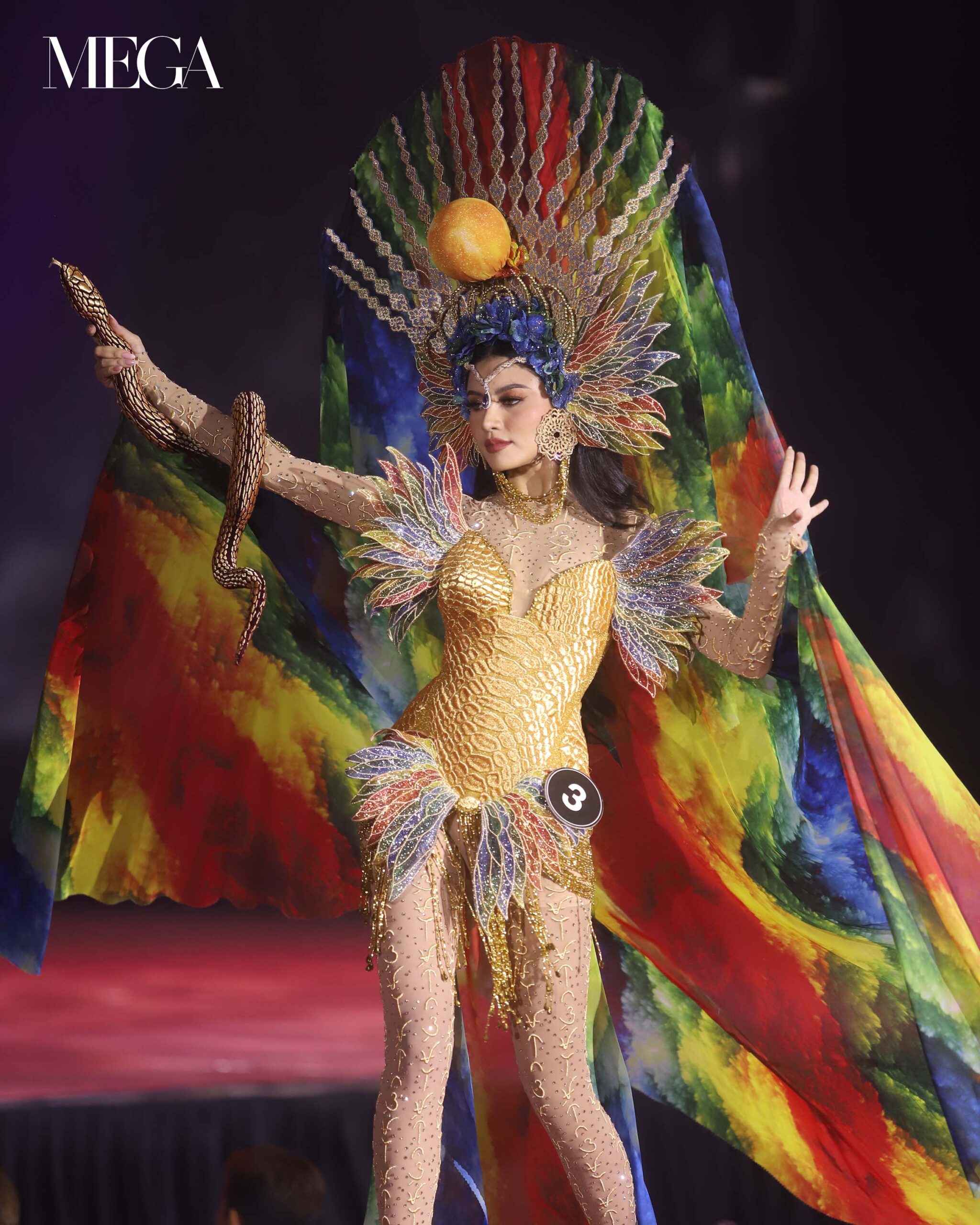
Quezon Province
Anje Mae Manipol took inspiration from the welcome arc in Tiaong for her Binibining Pilipinas national costume. The oldest church in Quezon, Minor Basilica de San Miguel Archangel, had baroque elements that were also present in the attire. The hints of the Pahiyas kiping also highlighted in the frock completed a creation that showed the province’s richness.
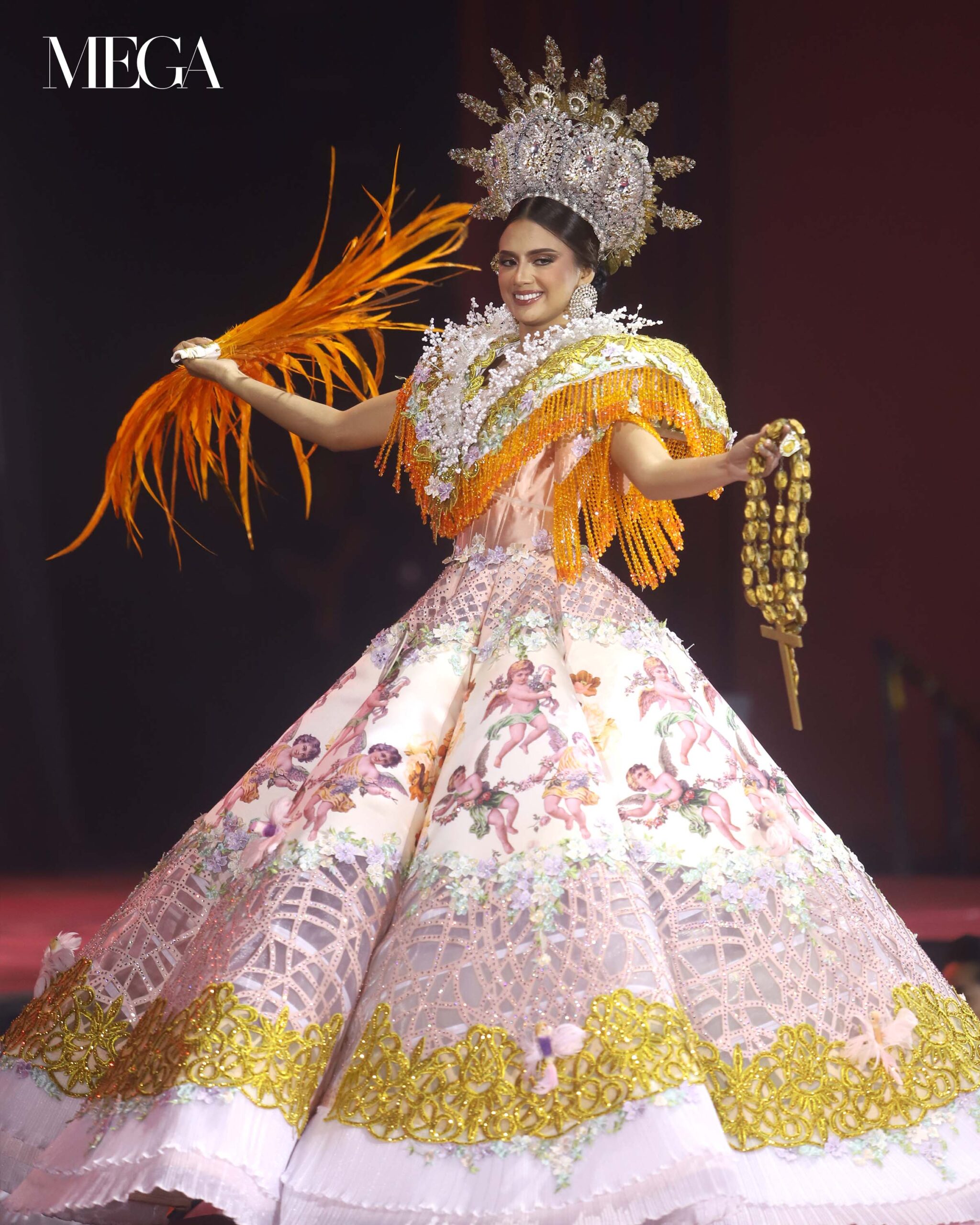
Cavite
Known as the land of the brave, Cavite was the home of courageous figures in history. Julianne Rose Reyes injected this fact with her striking ensemble. Interpreting the sorrow and pain of Filipina revolutionary Gregoria Montoya, the red floral detailing symbolized the hardships of Filipinos during the Spanish era. In history, the black iteration of the Maria Clara attire stood for grief. This served as the Caviteña’s base for her chose national costume.
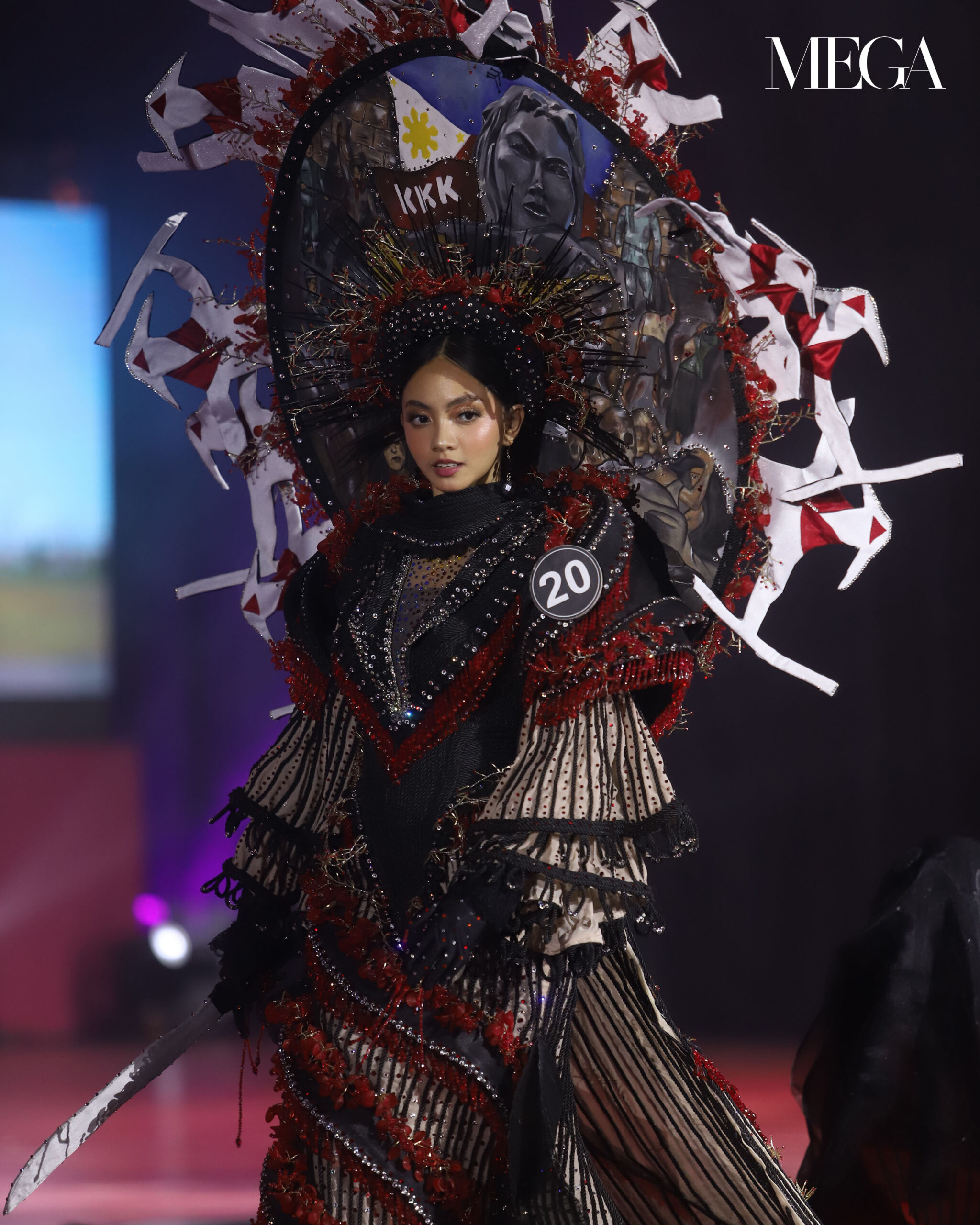
Photography EXCEL PANLAQUE
The post Binibining Pilipinas 2023 National Costumes Highlighted Cultural Themes appeared first on MEGA.
Binibining Pilipinas 2023 National Costumes Highlighted Cultural Themes
Source: Insta News Pinoy

0 Comments